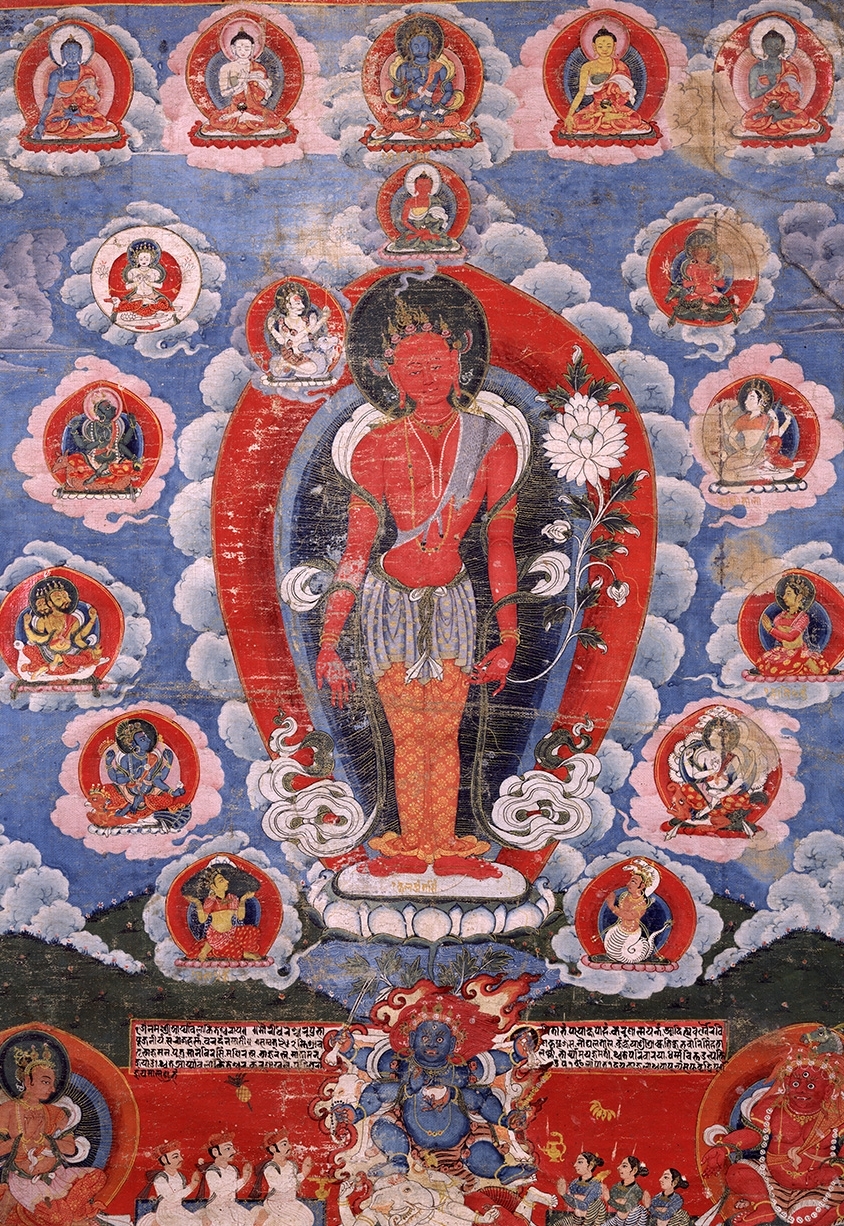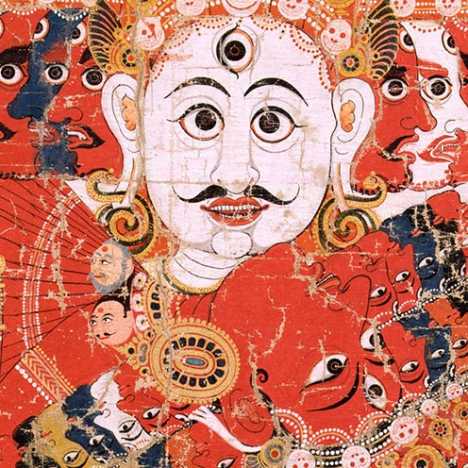
Rakta, or Red, Lokeshvara, a meditation form of Avalokiteshvara, the Bodhisattva of compassion, stands at the center of this painting with his spiritual father Amitabha emanating from his crown and surrounded by a number of Hindu gods emanating from his body. In Nepal Buddhist deities and Hindu gods are both vital parts of ritual life and are worshiped side-by-side, and several deities particularly important to local communities retain conflated religious identities and are celebrated by Hindu and Buddhists alike at annual festivals and in daily rituals. In this case Red Lokeshvara has another identity as the local Hindu god Macchendranath, who is appealed to in a festival preceding the monsoon rains. Indeed, an inscription in gold letters below his feet identifies him as such (Macchendranath). A long inscription in Newari (a Nepalese script) at the center of the lower register emphasizes Lokeshvara’s kindness. It further indicates that the painting was commissioned in 1842 by a man named Shakya Bhikshu Bhavanisinha who lived in Kunche in the locality of Noghal (Kathmandu) together with his family. Below the inscription the artist has portrayed the family of donors on either side of Six-armed Mahakala. In this painting we see Newari painters employing artistic conventions of the nineteenth century with traditional elements such as those found in the donor depiction at the bottom.
29 3/8 x 22 in.
C2006.66.45, HAR100013
- https://dev.rubinmuseum.org/images/content/772/c2006.66.45har100013__zoom.jpg
- https://dev.rubinmuseum.org/images/content/772/c2006.66.45har100013__zoom.jpg


